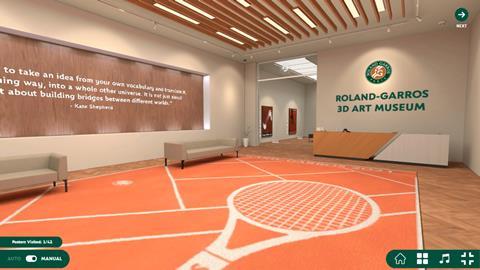Navin Rammohan, vice president, segment head marketing at Infosys, looks at whether Zoom fatigue can be defeated.

Last year, the world adapted to the coronavirus pandemic and moved itself online almost overnight, and at an unprecedented scale. With the health crisis affecting almost every facet of public and private life, many sporting organisations accelerated their digital transformation efforts to deliver online experiences that ensured their events could continue, albeit without the human, face-to-face interaction that brought these events to life. One year on, and sports organisations remain largely unable to revert to their usual way of delivering events, and now face another pandemic spreading across fans worldwide: online, or Zoom, fatigue.
Online or ‘Zoom fatigue’ refers to a feeling of exhaustion towards virtual meetings or experiences. This feeling has in no doubt been accentuated by yet another pandemic year, which has seen fans from across the world disappointed yet again at the inability to attend their favourite events in person. This is the grim reality facing many sporting organizations which, despite their best efforts to accelerate digital transformation efforts and host tournaments online, must continue their fight to remain relevant amongst fans around the world.
Pioneering digital solutions
What this problem demands is a need to combine the insights learned from 2020 with fresh thinking, innovation, and strategy. The biggest buzz of any sport is being at the stadium, feeling the kinetic energy and being connected to a game you are passionate about. While we’ve all come to rely on digital to bridge the gap between our physical and remote worlds, they’ve undoubtedly become less exciting and less engaging over the past year. To overcome this fatigue, sporting organisations need to transform their digital experiences into something fans can excitedly anticipate, not simply expect. This will require them to bring the sports community together on a whole new level, through innovative, immersive experiences rather than something that is purely hosted online.
In both 2021 and beyond, there lies a crucial opportunity for these organisations to pioneer the digital solutions needed to bring remote fans closer to the game and overcome the dreaded online fatigue. Given the developments made in advanced technologies - including AI, virtual reality, and 3D visualisation - there lies a crucial opportunity for these technologies to drive these new experiences for fans.
As part of a 3-year strategic digital innovation partnership with the French Tennis Federation, we have been proud to deliver on this ambition at the Roland-Garros tournament by continually innovating and bringing a new level to the game each year. This year was particularly challenging, and we understood that fans were likely to feel disconnected from the game during a second pandemic year filled with even more 2D virtual sporting experiences. To offer a solution that made match viewing interactive and immersive, we developed a first-of-its-kind 3D Virtual Art Museum.

Drawing on history and heritage
“Begin at the beginning… and go on.”
Throughout the development process, we drew inspiration from the King in Lewis Carroll’s Alice in Wonderland by turning our attention to the history of the Roland-Garros tournament, which first began in 1891. Bringing the heritage of the beloved game to life through 3D immersive technology, we hoped to capture the tournament’s spirit and galvanise sporting fans during another disrupted season.
This demanded thinking at quite some variance from our decades-old work as a technology solutions company addressing business issues, and required us to don the hat of a media production company for the first time. To bring the full Roland-Garros experience to global audiences, the museum was developed to enable audiences to virtually walk through a 3D museum space and interact with legendary posters and artwork from the 40 years of tournament history. It’s also possible for visitors to benefit from insightful commentary on each piece of artwork, just as if they were present in person.
Other digital solutions developed this year include a 3D match centre – which provides audiences with commentary and insights through AI-powered voice assistants – Infosys’ AI-powered match analysis – which enables players and coaches to make better informed training decisions - and AI-powered multimedia assets for tournament journalists.

Looking forward
Together, these innovations demonstrate the ways technologies can be leveraged to immerse remote audiences into history, spirit, and culture of an event to mimic the physical experience as closely as possible. And whilst the threat of online or Zoom fatigue persists, it’s difficult to deny the important role that technology continues to play in ensuring that events are not only accessible to remote audiences, but that they feel as ‘real’ and human as possible during the pandemic.
Creating rich digital experiences is no easy feat and, amidst the continued disruption to our favourite events, we hope to see many more innovations developed to reignite a passion for the game, and transform the remote viewing experience for fans across the world. There’s a crucial opportunity for the sporting world to pioneer these solutions and showcase the technologies that are sparking excitement in fans around the world and ultimately bringing people closer during a challenging time.
Never has the intersection between sport and technology been more crucial, and I certainly look forward to what will be achieved in this space going forward.

Navin Rammohan is vice president, segment head marketing at Infosys.




No comments yet